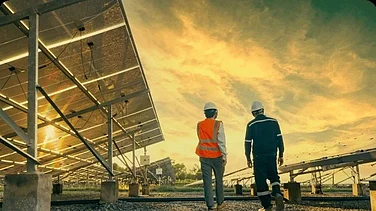India will require 40-50 Terawatt-hours (TWH) of additional electricity and 45-50 million square feet of real estate space to meet the projected demand for artificial intelligence (AI)-driven data centres by 2030, according Deloitte India’s report Attracting AI Data Centre Infrastructure Investment in India.
The report emphasied on the need for significant investments and targeted policy interventions to position India as a global hub for AI-enabled data centres. “For India to accelerate its AI capabilities and realise its potential, it is necessary to introduce enabling policies to support the sector,” said S Anjani Kumar, Partner at Deloitte India.
The report identified six pillars essential for building an AI-ready ecosystem, that include real estate, power and utilities infrastructure, connectivity and network infrastructure, compute infrastructure, talent and policy framework. It estimated that the total investment required for the 47 GW AI data centre pipeline is around $360 billion.
“India's strategic location allows it to serve domestic and global markets effectively, positioning it as a critical node in the global data centre ecosystem," said Neha Aggarwal, Partner, Deloitte India.
“However, India’s vision to become a global AI hub demands a relook at the traditional data centre infrastructure,” Aggarwal added.
According to Deloitte India, India’s AI market is expected to reach $20–22 billion by 2027, growing at a CAGR of 30%. Despite hosting nearly 20% of the world’s data, the country has just 3% of the global data centre capacity- indicating a gap between India’s AI aspirations and readiness.
Balancing AI and Sustainability
To bridge this gap, IndiaAI Mission was launched in 2024 with a Rs 10,300 crore allocation over five years. A key focus of this mission is the development of a high-end common computing facility equipped with 18,693 Graphics Processing Units (GPUs), making it one of the most extensive AI compute infrastructures globally. So far, about 10,000 GPUs have been deployed with more to follow, enabling creation of indigenous AI solutions tailored to Indian languages and contexts.
Alongside the need for massive infrastructure investments, the growing AI data centre demand also raises concerns about energy consumption and environmental impact. As India works to achieve its net zero target for 2070, the rise of AI-driven industries will require a focus on sustainable practices in both data centre operations and the electronics manufacturing supply chain. Balancing technological growth with environmental responsibility will be critical to meeting the nation’s long-term goals, according to The Hindu.
While India has taken key steps, experts warn that only faster policy implementation and private sector engagement can make India’s ambitious goal a reality in the coming years.



















